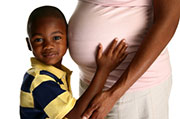
MONDAY, May 12, 2014 (HealthDay News) — A woman’s risk of having a serious car accident may increase in her second trimester of pregnancy, a large new Canadian study suggests.
Researchers found that compared with the few years before pregnancy, a woman’s risk of a traffic accident rose by 42 percent during the second trimester. During the third trimester, the odds dropped again.
Experts said they cannot tell why the pattern exists. But the findings do suggest women should be especially mindful about safe driving when they’re pregnant.
“This is not a reason to stop driving,” said Dr. Donald Redelmeier, a researcher with the Institute for Clinical Evaluative Sciences in Toronto, who led the study. “It’s a reason to drive more carefully,” he explained.
“And it doesn’t mean you should give the driving responsibilities to your husband,” Redelmeier added. Even with a 42 percent increase, he noted, pregnant women’s accident rate is lower than that of men their age.
The study, published online May 12 in the journal CMAJ (Canadian Medical Association Journal), is based on records for more than 500,000 Canadian women who gave birth between 2006 and 2011. The researchers looked at the women’s rates of serious car accidents — bad enough for a trip to the ER — during pregnancy and during the three years before pregnancy.
Before pregnancy, the study found, the crash rate was about 4.5 per 1,000 women each year. The rate was similar during the first trimester of pregnancy, but then rose to almost 7.7 crashes per 1,000 women during the first month of the second trimester. During the third trimester, car accidents dipped again.
According to Redelmeier, the second-trimester jump was seen regardless of women’s age or income and education levels. It was also apparent in all seasons of the year.
Still, it’s hard to definitely pin the blame on pregnancy itself, according to an emergency medicine physician who was not involved in the research.
Other factors, that could not be measured in the study, might account for the connection, said Dr. Sampson Davis, of Meadowlands Hospital Medical Center in Secaucus, N.J.
It’s also unclear why the risk would drop again in the third trimester, Davis added.
Despite the questions, though, he agreed that safe driving should be emphasized during pregnancy. “Normally, obstetricians don’t talk to women about driving,” Davis said. “I think adding that to prenatal care is important.”
According to Redelmeier, there could be something about the second trimester, in particular, that makes women more vulnerable to driving errors. He said the “accumulating physiological changes” of pregnancy, plus stress, might leave women fatigued or otherwise off their driving game.
But because their bodies have not yet gone through the outward changes of later pregnancy, they may be going about all their usual activities — without realizing their driving skills are less sharp.
That’s speculation, though. “We can’t get at the mechanisms with this study,” Redelmeier said. “But just because we don’t know the exact causes doesn’t mean we can’t prevent these accidents.”
The bottom line for pregnant women, he added, is to “always obey speed limits, obey stop signs, yield the right of way, minimize distractions and wear a seatbelt.”
Davis agreed, emphasizing the “don’t use your cellphone” rule. “And if you’re tired and not feeling well one day,” he said, “don’t drive.”
Sometimes, Davis noted, pregnant women worry that wearing a seatbelt across the abdomen could be harmful to the baby. But that’s not true, he stressed.
“Wearing a seatbelt protects you if you’re in an accident,” Davis said. “And that protects the baby, too.”
More information
The U.S. National Highway Traffic Safety Administration has advice on driving during pregnancy.
Copyright © 2025 HealthDay. All rights reserved.

